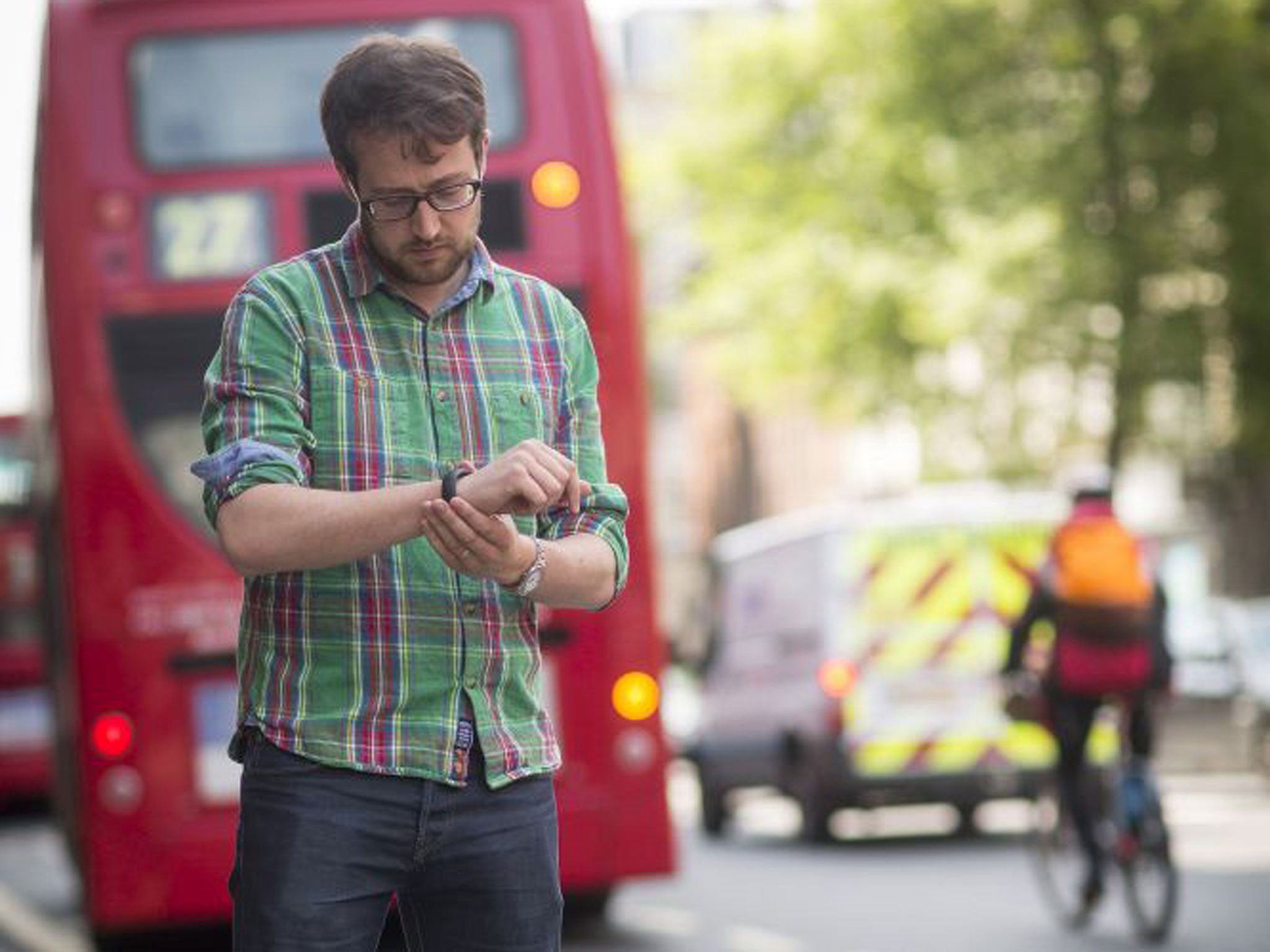A wristy business: Does the Nike+ Fuelband help you lose weight?
The endorsement of Nike’s latest hi-tech, wearable exercise gadget by Apple boss Tim Cook as his favoured fashion accessory will no doubt help propel sales of the Fuelband. Will Dean takes a closer look at £129 device to see if it really sheds the pounds

Tim Cook, like his predecessor Steve Jobs, certainly isn’t a man one would turn to for style advice. Sure, he shoulders a nice line in dark casual shirts and scrubs up well for a Senate tax hearing. But in the main he is from the Dad-at-a-BBQ school of Silicon Valley sartorialism.
But what the Apple chief executive has been wearing on his wrist for the past few months may well lead to a surge in sales for one clothing company.
While speaking at the Wall Street Journal’s annual D11 conference in Ranchos Palos Verdes, near Los Angeles, this week, Mr Cook revealed that his new fashion accessory was a Nike+ Fuelband, a wearable exercise-measuring device that the sportswear company released in 2012.
When the WSJ’s Kara Swisher and Walt Mossberg asked Mr Cook what he thought about wearable tech, specifically Google’s much-hyped Glass computer spectacles, he was dismissive. “I wear glasses because I have to,” he said. “I don’t know a lot of people that wear them that don’t have to.”
He then rolled up his sleeve. “I wear this,” he said. “It’s a Fuelband. I think Nike did a great job with this.”
Mr Cook went on to explain, presumably accompanied by the sound of Nike executives grinning, that of all the wearable technology on the market, he was most impressed with devices like Nike’s (which coincidentally requires an iPhone, although an Android version is in the works).
“I think the wrist is interesting. I’m wearing this on my wrist,” he said. “It’s somewhat natural. For something to work here you have to convince people it’s so incredible they want to wear it.”
So what’s so incredible about the Fuelband? It is basically a wristband which looks a bit like a child’s digital watch. Like rival products from Fitbit and Jawbone, it tracks how much you move and the speed and energy with which you do it, and syncs the data with your mobile phone to update your progress. If you hit your daily goal of “Fuelpoints”, you begin a streak. Miss the target the next day and your streak ends. In simple terms it is a very clever pedometer. But because all your data is stored and it feeds back immediately, it can very quickly begin to encourage you to do more exercise.
I tested the Fuelband earlier this year and found that once I’d started a streak, it was psychologically very difficult to let it lapse. So, after a slothful day at my desk I was making the choice to walk or Boris Bike to the next Tube station along. I was deliberately missing the bus home and signing up for extra games of football.
Once I’d hit my goal for a few days in a row, the device suggested that I raise my activity target. When I began to hit that every day, it raised the bar again. I had the test device for only a few weeks, but the logical endpoint was Olympic-level fitness by 2014. Or, at the very least, a few pounds lost and some bus fares saved.
The market for devices like the £129 Fuelband is beginning to swell, with technology now able to track not just exercise, but almost every quantifiable aspect of human behaviour. This developing field of self-analysis has become known as “the quantified self”.
Winslow Strong, the founder of BiohackYourself.com, said: “It’s been shown that even the simple act of tracking something, like how much you walk or exercise a day, usually has a positive impact.” Although Mr Strong’s self-analysis extends to monitoring his sleep patterns with an electroencephalogram (EEG) and measuring his heart rate during meditation, he sees these mainstream products as a key development in the quantified self.
He suggests that if devices like the Fuelband go mainstream, we could see swathes of fitter people. “These devices help with behavioural change,” he says.
The next stage, he believes, could be under-the-skin implants which feed back potential health problems immediately. For now, though, I think I’ll stick to being tricked into missing the bus.
Wrist watchers: Hi-tech monitors
Fitbit Flex (iPhone, some Android phones)
Fitbit has been in the market for measured exercise since 2008. Its previous device, the Tracker, went in your pocket. Its newest wristband device, the colourful Flex, measures steps taken and calories burned, but can also monitor sleep patterns.
www.fitbit.com
Jawbone Up (iPhone, Android)
Jawbone is best known for its Jambox wireless speakers. Like the Flex, the Up measures sleep patterns and tells you what kind of sleep you’re getting. As well as measuring distance and calories, you can also scan the barcodes of the food you eat to measure your calorific intake. For hardened couch potatoes it will even nudge you when you’ve been slumped on the sofa for too long.
jawbone.com
Nike+ Fuelband (iPhone)
Unlike the Up and the Flex, the Fuelband has a miniature display screen, so you can find out if you need to up your game by pressing a button (it even tells the time). Using the Nike+ website and iPhone app, you can compare your daily “fuelpoints” with friends, adding an element of competition to getting fit.
www.nike.com
Subscribe to Independent Premium to bookmark this article
Want to bookmark your favourite articles and stories to read or reference later? Start your Independent Premium subscription today.

Join our commenting forum
Join thought-provoking conversations, follow other Independent readers and see their replies